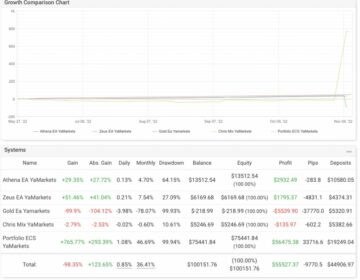
In the ever-evolving landscape of financial technology, Buy Now, Pay Later (BNPL) provider Klarna has made headlines with its recent financial performance. The first half of the fiscal year witnessed Klarna successfully narrowing its losses, showcasing its commitment to sustainable growth. However, the anticipated milestone of posting a profit remains elusive.
This dichotomy encapsulates the challenges and opportunities faced by disruptive fintech firms like Klarna, which have rapidly transformed consumer purchasing behavior. As the company navigates through a competitive market and adapts to changing regulations, its journey sheds light on the intricate interplay between innovation, profitability, and the traditional financial framework.
Klarna’s Resilience: Slashing Losses by 67% and Paving the Path to Profitability in the BNPL Arena
Swedish Buy Now, Pay Later (BNPL) trailblazer, Klarna, has significantly slashed its losses by a staggering 67% during the first half of 2023, embarking on a rigorous cost-cutting campaign to pave the path towards profitability.
Revealing a robust net operating income of 9.2 billion Swedish krona (equivalent to $843.5 million), indicating a substantial 21% year-on-year surge, Klarna’s journey towards financial solvency was underscored by a net loss of 2.1 billion Swedish krona for the same period. This marks a notable 67% reduction from the 6.4 billion krona loss recorded between January and June of the previous year.
Notably, Klarna boasts a noteworthy achievement: it reported one month of profitability in the first half, outpacing its own internal target to consistently post monthly profits within the latter half of the year.
Sebastian Siemiatkowski, Klarna’s visionary CEO and founder, extolled this milestone, asserting that the results “defy the misconceptions surrounding Klarna’s business model” and serve as a testament to its adaptability and sustainability. Siemiatkowski further underscored the company’s robust consumer base, dismissing concerns regarding economic volatility and high interest rates.
The company witnessed a 39% reduction in credit losses, denoting provisions set aside for customer defaults, which dwindled from 2.9 billion to 1.8 billion krona.
As a key player in the BNPL arena, Klarna defers payments and offers interest-free credit installments, supported by a model that charges merchants rather than consumers, enabling zero-interest loans. Yet, the emergence of rising interest rates has thrown a spotlight on the challenges to this funding model.
A substantial cost-cutting campaign initiated in 2022, including a 10% reduction in its workforce, evidently bore fruit, as Siemiatkowski had previously foreseen profitability achieved on a monthly basis in the latter half of 2023.
Klarna attributed its ability to generate monthly profits during H1 2023 to streamlined cost structures, with operating expenses (pre-credit losses) showing a remarkable 26% year-on-year improvement. A strategic emphasis on artificial intelligence also played a pivotal role, evident in the company’s innovative customer services feature that efficiently resolves merchant disputes, saving over 60,000 hours annually.
As part of its tech-forward approach, Klarna revitalized its app with personalized shopping features akin to TikTok’s content discovery feed. Despite a market value slump of 85% in the previous year, attributed to macroeconomic challenges, Klarna’s strategic maneuvers and steadfast focus on innovation stand as a testament to its enduring journey in reshaping the fintech landscape.
What Klarna Can Do After Recent Changes?
The substantial strides taken by Klarna, a leading player in the Buy Now, Pay Later (BNPL) sector, are poised to reverberate within trading circles, potentially presenting both opportunities and considerations for traders navigating the evolving financial landscape.
Traders who closely monitor fintech trends will find Klarna’s progress particularly intriguing. The firm’s ambitious endeavors to curtail losses and enhance profitability might evoke increased investor confidence, potentially leading to heightened interest in Klarna’s stock. As the company demonstrates its agility and sustainable business model, traders could interpret this as a positive sign, potentially influencing stock prices and overall market sentiment. The significant reduction in credit losses, a key measure of financial stability, could bolster trust in Klarna’s operations among traders and investors.
Regarding the Klarna app, traders can anticipate the potential ramifications of the app’s revitalization. The infusion of artificial intelligence-driven features and personalized shopping experiences aligns with prevailing consumer trends. This could translate into heightened customer engagement and increased transactions, reflecting positively on Klarna’s bottom line. For traders seeking to capitalize on this shift, analyzing data related to app usage, customer feedback, and adoption rates could provide valuable insights into the company’s trajectory.
Traders might also consider Klarna’s pivot towards profitability as indicative of the BNPL sector’s resilience amid macroeconomic challenges. This realization could foster interest in other similar companies operating in the BNPL space, potentially driving sector-wide investment trends.
However, prudent consideration is essential. The fintech sector can be subject to rapid shifts, and external factors such as regulatory changes or shifts in consumer preferences can influence market dynamics. Traders should conduct thorough research into Klarna’s financials, industry trends, and potential risks before making investment decisions.
In conclusion, Klarna’s strides towards profitability and its innovative app can impact traders by influencing stock prices, sector sentiment, and investment trends. Engaging in informed analysis, staying abreast of industry developments, and assessing potential risks will empower traders to navigate this evolving landscape strategically.
- SEO Powered Content & PR Distribution. Get Amplified Today.
- PlatoData.Network Vertical Generative Ai. Empower Yourself. Access Here.
- PlatoAiStream. Web3 Intelligence. Knowledge Amplified. Access Here.
- PlatoESG. Automotive / EVs, Carbon, CleanTech, Energy, Environment, Solar, Waste Management. Access Here.
- PlatoHealth. Biotech and Clinical Trials Intelligence. Access Here.
- ChartPrime. Elevate your Trading Game with ChartPrime. Access Here.
- BlockOffsets. Modernizing Environmental Offset Ownership. Access Here.
- Source: https://www.forexnewsnow.com/fintech/klarnas-bnpl-evolution-slashing-losses-by-67-and-navigating-path-to-profitability/
- :has
- :is
- 000
- 1
- 2022
- 2023
- 60
- 8
- 9
- a
- ability
- achieved
- achievement
- adaptability
- adapts
- Adoption
- After
- Aligns
- also
- ambitious
- Amid
- among
- analysis
- analyzing
- and
- Annually
- anticipate
- Anticipated
- app
- approach
- ARE
- Arena
- artificial
- artificial intelligence
- Artificial Intelligence-driven
- AS
- Asserting
- Assessing
- base
- basis
- BE
- before
- behavior
- between
- Billion
- BNPL
- boasts
- bolster
- both
- Bottom
- business
- business model
- buy
- by
- Campaign
- CAN
- capitalize
- ceo
- CEO and Founder
- challenges
- Changes
- changing
- charges
- circles
- closely
- commitment
- Companies
- company
- Company’s
- competitive
- Concerns
- conclusion
- Conduct
- confidence
- Consider
- consideration
- considerations
- consistently
- consumer
- Consumers
- content
- Cost
- could
- credit
- customer
- Customer Engagement
- data
- decisions
- defaults
- demonstrates
- Despite
- developments
- discovery
- disputes
- disruptive
- do
- driving
- during
- dynamics
- Economic
- economic volatility
- efficiently
- embarking
- emergence
- emphasis
- empower
- enabling
- encapsulates
- endeavors
- enduring
- engagement
- engaging
- enhance
- Equivalent
- essential
- evident
- evolution
- evolving
- expenses
- Experiences
- external
- faced
- factors
- Feature
- Features
- feedback
- financial
- financial performance
- financial stability
- financial technology
- financials
- Find
- fintech
- FinTech Trends
- firms
- First
- Fiscal
- Focus
- For
- Foster
- founder
- Framework
- from
- funding
- further
- generate
- Growth
- had
- Half
- Have
- Headlines
- heightened
- High
- HOURS
- However
- HTTPS
- Impact
- improvement
- in
- In other
- Including
- Income
- increased
- indicating
- indicative
- industry
- influence
- influencing
- informed
- infusion
- initiated
- Innovation
- innovative
- insights
- Intelligence
- interest
- Interest Rates
- internal
- into
- intriguing
- investment
- investor
- Investors
- IT
- ITS
- January
- journey
- june
- Key
- Klarna
- krona
- landscape
- later
- leading
- light
- like
- Line
- Loans
- loss
- losses
- Macroeconomic
- made
- Making
- Market
- market sentiment
- market value
- measure
- Merchant
- Merchants
- might
- milestone
- million
- misconceptions
- model
- Monitor
- Month
- monthly
- Navigate
- navigating
- net
- notable
- noteworthy
- now
- of
- Offers
- on
- ONE
- operating
- operating expenses
- Operations
- opportunities
- or
- Other
- over
- overall
- own
- part
- particularly
- path
- pave
- Paving
- Pay
- payments
- performance
- period
- Personalized
- Pivot
- pivotal
- plato
- Plato Data Intelligence
- PlatoData
- played
- player
- poised
- positive
- Post
- potential
- potentially
- preferences
- prevailing
- previous
- previously
- Prices
- Profit
- profitability
- profits
- Progress
- provide
- provider
- purchasing
- rapid
- rapidly
- Rates
- rather
- realization
- recent
- recorded
- reduction
- reflecting
- regarding
- regulations
- regulatory
- related
- remains
- remarkable
- Reported
- research
- resilience
- Results
- rigorous
- rising
- risks
- robust
- Role
- same
- saving
- sector
- seeking
- sentiment
- serve
- Services
- set
- shift
- Shifts
- Shopping
- should
- showcasing
- showing
- sign
- significant
- significantly
- similar
- slashing
- Slump
- Solvency
- Space
- Spotlight
- Stability
- stand
- steadfast
- stock
- Strategic
- Strategically
- streamlined
- strides
- structures
- subject
- substantial
- Successfully
- such
- Supported
- surge
- Surrounding
- Sustainability
- sustainable
- Sustainable Growth
- Swedish
- taken
- Target
- Technology
- testament
- than
- that
- The
- this
- Through
- to
- towards
- Traders
- Trading
- traditional
- trailblazer
- trajectory
- Transactions
- transformed
- translate
- Trends
- Trust
- Usage
- Valuable
- value
- visionary
- Volatility
- was
- which
- WHO
- will
- with
- within
- witnessed
- Workforce
- year
- yet
- zephyrnet










